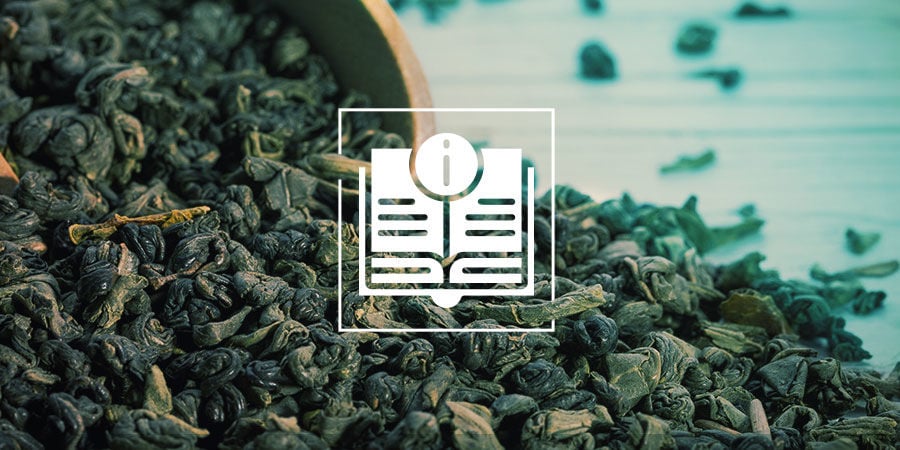-
Seedshop
-
Feminized
Cannabis seeds -
Autoflowering
Cannabis Seeds -
Regular
Cannabis Seeds -
F1 Hybrid
Cannabis Seeds -
CBD
Cannabis Seeds -
Zamnesia
Cannabis Seeds
-
Top 10’s
- Top 10 Feminized Seeds
- Top 10 Autoflowering Seeds
- Top 10 Regular Seeds
- Top 10 USA Cannabis Strains
- Top 10 Zamnesia Seeds
-
Favourites
- Beginner Strains
- Below 1% THC
- Classic Cannabis Strains
- Cup Winners
- F1 Hybrids
- Fast-Flowering Strains
- High CBD Strains
- High THC Strains
- Mix Packs
- Zamnesia Exclusive Collabs
-
-
Headshop
-
Vaporshop
- Spare Parts & Accessories
- AirVape X
- AirVape XS GO (2021)
- Arizer Air MAX
- Arizer Extreme Q
- Arizer Solo 2
- Arizer V-Tower
- Arizer XQ2
- Boundless CFC 2.0 Vaporizer
- Boundless CFX
- Boundless TERA (V3)
- CRAFTY+
- DaVinci IQ2
- DaVinci IQC
- DaVinci MIQRO
- Dr. Dabber Boost EVO
- Dr. Dabber Stella
- DynaVap Omni 2021
- DynaVap VapCap "M" PLUS 2023
- DynaVap VapCap 'M' 2021
- DynaVap VonG (i) Titanium
- Dynavap The "B" Series
- Eagle Bill
- Firefly 2+
- Flowermate Aura
-
Healthshop
-
Smartshop
-
Shroomshop
-
Growshop
-
Seedshop
All CategoriesSeedshop
-
Vaporshop
All CategoriesVaporshop
- Top 10 Vaporizers
- Spare Parts & Accessories
- AirVape X
- AirVape XS GO (2021)
- Arizer Air MAX
- Arizer Extreme Q
- Arizer Solo 2
- Arizer V-Tower
- Arizer XQ2
- Boundless CFC 2.0 Vaporizer
- Boundless CFX
- Boundless TERA (V3)
- CRAFTY+
- DaVinci IQ2
- DaVinci IQC
- DaVinci MIQRO
- Dr. Dabber Boost EVO
- Dr. Dabber Stella
- DynaVap Omni 2021
- DynaVap VapCap "M" PLUS 2023
- DynaVap VapCap 'M' 2021
- DynaVap VonG (i) Titanium
- Dynavap The "B" Series
- Eagle Bill
- Firefly 2+
- Flowermate Aura
- Flowermate Cap Pro
- Flowermate Slick
- Flowermate V5.0S Pro
- G Pen Connect
- G Pen Elite II
- G Pen Micro+
- G Pen Pro
- G Pen Roam
- Hydrology9 Vaporizer
- Hyer Big-E Rig
- MIGHTY
- MIGHTY+
- PAX Mini
- PAX Plus
- PLENTY
- Pax 3 Vaporizer
- Puffco Peak PRO Smart Rig
- Puffco Peak Smart Rig
- Puffco Plus
- Storm Vaporizer
- The Proxy (Puffco)
- VOLCANO CLASSIC
- VOLCANO HYBRID
- Vape-Lifter
-
Smartshop
All CategoriesSmartshop
- Top 10 Smartshop
- Zamnesia Gift Cards
- After Party
- Aphrodisiacs
- Aromatherapy
- Blue Lotus
- CBD Vape Juice
- Capsule Machines
- Crystals, Gemstones & Minerals
- Dream Herbs
- Drug Tests
- Extracts
- Happy Caps
- Herbal Tea
- Herbs & Seeds
- Incense
- Kanna
- Kratom
- LSA Seeds
- Mescaline Cacti
- Microdosing
- Nootropics
- Relaxing
- Salvia divinorum
- Smart Seeds
- Stimulants
- Supplements
- Tinctures
- Vape Herbs
-
TRIBE
All CategoriesTRIBE
- My Membership
- Spend Gift Points
- Exclusive products
- Earn Extra Gift Points
-
TRIBE
- Early Access
- Refer a Friend
- Information
-
TRIBE
-
Language
 United States
United States
Monday, 21 April and Friday, 25 April 2025*
Gunpowder Green Tea: Everything You Need To Know
Gunpowder tea is a type of green tea that connoisseurs love for its bold taste and smoky flavour. Learn everything about gunpowder green tea in our guide!
WHAT IS GUNPOWDER TEA?
Gunpowder tea is a Chinese green tea where the leaves are rolled into tiny pellets to retain their flavour and freshness. It has a bold taste with a smoky flavour, and an aftertaste described by tea aficionados as “coppery”. Gunpowder is one of the most popular green teas in the world.
The unique name of gunpowder tea stems from enigmatic origins. In Chinese, it is actually referred to as “pearl tea”, alluding to the pearl- or bead-like rolled leaves. Some believe that the tea got its English name from the small, round pellets that resemble black powder, or because the leaves “explode” into long leaves when brewed. The smoky flavour of the tea may also have something to do with it. Furthermore, it's thought that the English name may be inspired by the Chinese word for “freshly brewed” (gang pao de).
GUNPOWDER TEA VARIETIES
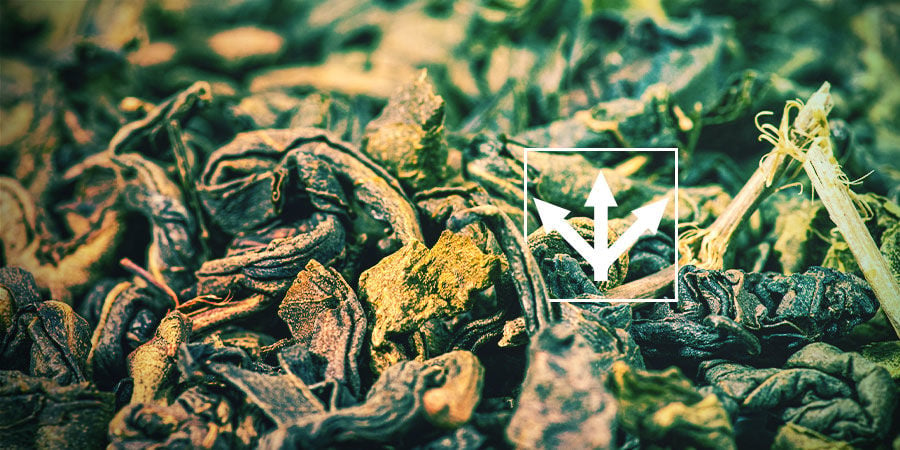
There are several varieties of gunpowder tea:
Chinese Pingshui
Chinese Pingshui is the original and most common variety of gunpowder tea. It features large pearls with good colour and, when compared to the more delicate Japanese green teas, brews into a bold and aromatic infusion.
Formosa
Formosa gunpowder is a type of tea grown in Taiwan. It has a distinct aroma compared to the gunpowder from the Chinese mainland. Taiwanese Formosa often appears in the form of fresh or roasted oolong, and features a strong, earthy taste and high caffeine content.
Ceylon
Another variant, Ceylon gunpowder is a tea grown at high altitudes in Sri Lanka. This unique environment, alongside very tightly packed nuggets, makes for a rich and very flavourful brew.
Other types of green teas rolled into "gunpowder" form include Huang Guanyin, Chunmee, Tieguanyin, and Dong Ding, as well as many other oolongs and some jasmine tea variants.
HISTORY AND ORIGIN OF GUNPOWDER TEA
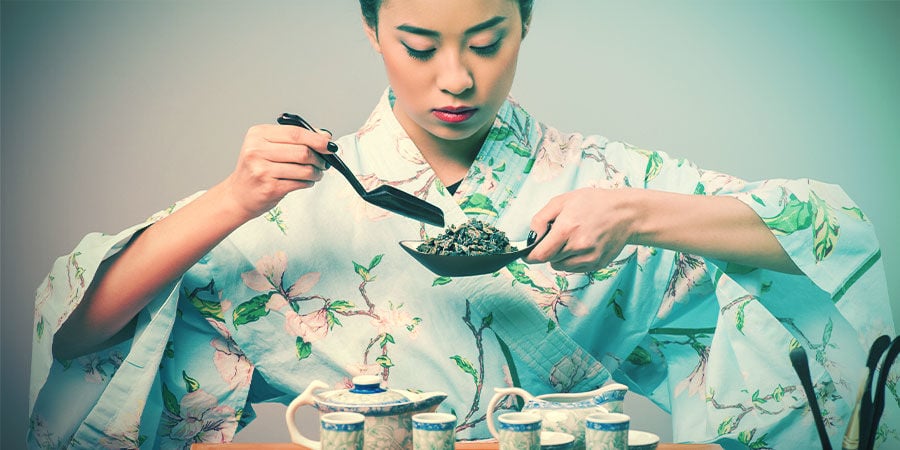
Like all types of tea, gunpowder has its origins in China. It was first produced in China’s Zhejiang Province during the Tang Dynasty, 618–907 AD. In modern times, the tea is also cultivated in other provinces in China and Taiwan. It’s noteworthy to mention that gunpowder tea is older than gunpowder itself, which was invented in China in 900 AD.
When Europeans first learned about tea in the 16th century, the most prominent types were green teas, including the hardy “gunpowder” tea, which, thanks to its tightly rolled leaves, was ideal for the long journey from China to Europe. This makes gunpowder tea one of the earliest teas enjoyed in Europe.
BENEFITS AND SIDE EFFECTS
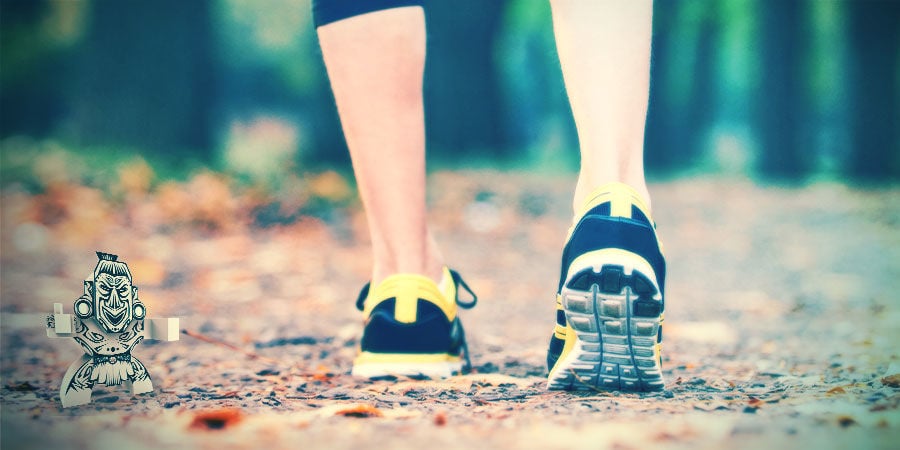
Gunpowder tea is made from green tea (Camellia sinensis), which is particularly rich in polyphenols—micronutrients with powerful antioxidant properties. Polyphenols such as EGCG are thought to have various benefits. For example, they protect against free radicals and the symptoms of aging. Green tea contains about 30% polyphenols by weight.
According to a 2016 report published in the International Journal of Cardiology, there is evidence that green tea supports the heart and that it is beneficial to blood pressure.
Along with the purported benefits of green tea, drinking it can also provide you with increased energy and mental alertness. In fact, some people drink green tea to boost their metabolism when they want to lose weight. Green tea is also a healthier alternative to coffee, without the negative side effects like the “jitters”.
Like other teas, gunpowder tea is generally safe when consumed in moderation. However, people who are sensitive to caffeine may feel agitated when they consume it. Compared to coffee, gunpowder tea contains less caffeine, so negative effects tend to be less pronounced.
GUNPOWDER TEA VS COFFEE
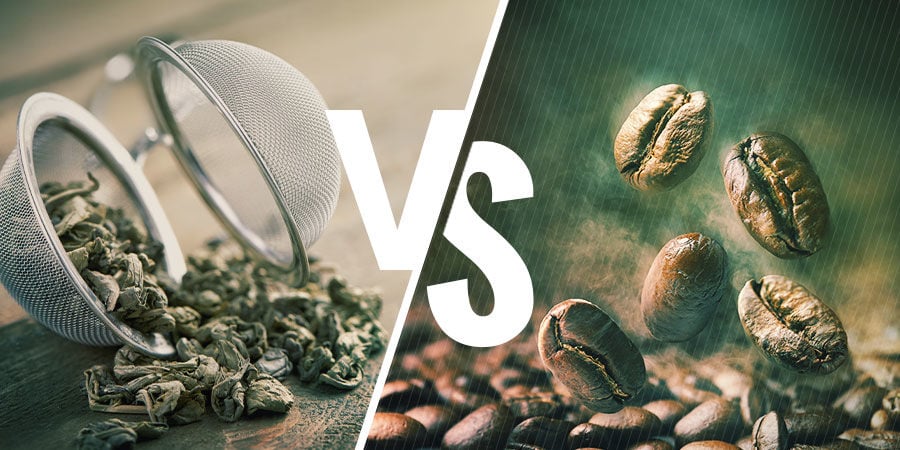
Gunpowder tea contains only slightly more caffeine than most other types of green tea, which on average contain around 30mg per cup. Exactly how much caffeine is in gunpowder tea depends on the quality of the tea and the brewing method used. Gunpowder tea from oolong contains an average of 40mg of caffeine per cup. The less common black varieties of gunpowder tea contain about 50mg of caffeine per cup. By comparison, an average cup of coffee contains 100–150mg of caffeine.
Aside from a lower caffeine content, green tea also contains the amino acid l-theanine, a relaxing, non-drowsy compound that helps to decrease jitters attributed to excess caffeine consumption. In this way, green tea provides a more sustained and less dramatic boost in energy that helps drinkers avoid the crash commonly associated with coffee.
Due to its high catechin content, another valuable antioxidant, green tea is believed to improve gum condition. Coffee, on the other hand, is known to stain the teeth and contribute to cases of periodontitis (inflammation of the gums).
HOW TO PREPARE THE PERFECT CUP OF GUNPOWDER GREEN TEA
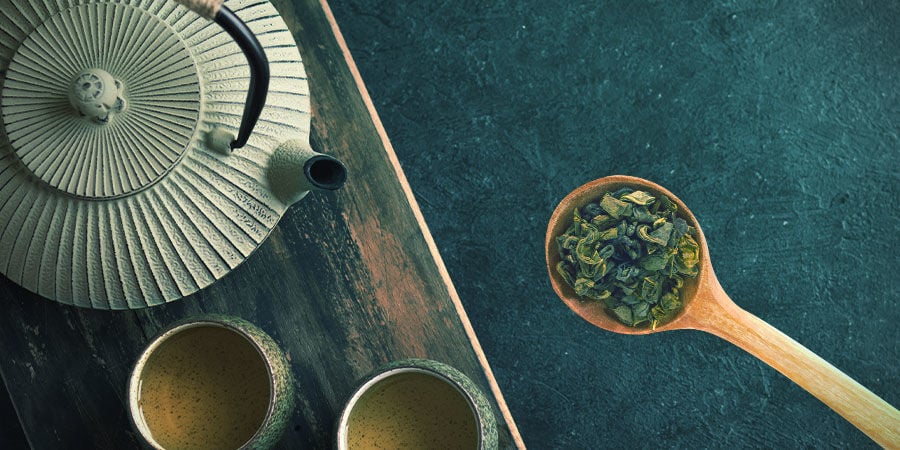
You can prepare your gunpowder tea in a teapot, but the traditional Chinese way is to brew it in a large glass or cup. If you’re getting gunpowder tea in a fancy tea shop, they will usually serve it in a gaiwan, a traditional Chinese tea bowl with a lid.
As a guideline for brewing, use about 1–2 tsp of gunpowder pellets per cup of water. Unlike most other green teas, gunpowder is quite strong, so make sure not to use too many pellets.
Brewing a nice cup of gunpowder tea is easier than preparing other kinds of green tea, as gunpowder is less picky with brewing temperatures. Just make sure you don’t brew your tea with boiling water; wait until the water has cooled down a bit. A temperature of 80°C is ideal. To achieve this temperature, remove your kettle from the heat once the water has come to a boil, then let it cool down for about two minutes before brewing.
Using a teapot
To make gunpowder tea in a teapot, all you need is a teapot and some cups. For each serving, use about 1 cup of water in your kettle. Bring the water to a boil, remove the kettle from the heat, and wait two minutes for the water to cool. While you wait, pre-warm your teapot with some of the hot water. Add about 2 tsp of gunpowder pellets for each cup in the pot. Pour the water from the kettle into the teapot and allow the tea to steep for a minute. You can now strain and serve your gunpowder tea!
Using an infuser
Using a tea kettle, bring water to a boil. Remove the kettle and allow the water to cool; pre-warm your cup with some hot water. Add about (1–2 tsp) of pellets into your infuser and place the infuser into your cup. Fill your cup nearly to the top with hot water and let steep for about 60 seconds.
Using a cup or mug
Once your water has come to a boil, remove it from the heat and pre-warm your teacup with hot water. Wait two minutes for the water to cool. Add 1–2 tsp of pellets into your cup. Fill with hot water from your kettle and allow the tea to steep for 60 seconds.
Cold-brewing gunpowder tea
People also like to cold-brew gunpowder tea. For cold-brewing, add about 2–3 tbsp of pellets to 400ml of cold water. You can also add one or two ice cubes. Stir the tea mix and place in your fridge for 8–10 hours to steep. Serve with a squirt of lemon juice for a healthy and very refreshing beverage!
FINAL TIPS FOR MAKING GUNPOWDER TEA
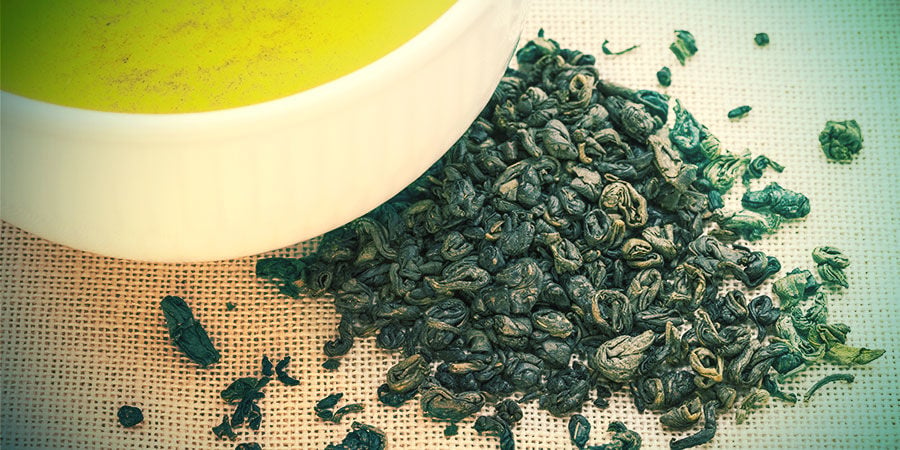
Unlike some teas, you can re-use your gunpowder tea leaves and brew them up to five times. The tea will get slightly weaker with each brewing, but you can boost the flavour by adding around 30 seconds of steep time to each new brew.
If your tea turns out bitter, it is likely that your water was too hot. All you need to do is allow the water to cool a little longer for your next brew. If it is still bitter, get a thermometer and make sure your water has an optimal temperature of 80°C.
If you find that your tea is either too weak or too strong, experiment a bit with the amount of pellets you’re adding to your cup. You can also increase the brewing time for a stronger, bolder taste. If your tea is too strong, simply use less tea the next time.

- (n.d.). - https://doi.org
- Gareth Richards, & Andrew Smith. (2015, December). Caffeine consumption and self-assessed stress, anxiety, and depression in secondary school children - https://www.ncbi.nlm.nih.gov
- Jun Pang, Zheng Zhang, Tong-zhang Zheng, Bryan A. Bassig, Chen Mao, Xingbin Liu, Yong Zhu, Kunchong Shi, Junbo Ge, Yue-jin Yang, Dejia-Huang, Ming Bai, & Yu Peng. (2016/01/01). Green tea consumption and risk of cardiovascular and ischemic related diseases: A meta-analysis - https://www.internationaljournalofcardiology.com
- Kyungdo Han, Eunkyung Hwang, & Jun-Beom Park. (2016). Association between Consumption of Coffee and the Prevalence of Periodontitis: The 2008–2010 Korea National Health and Nutrition Examination Survey - https://www.ncbi.nlm.nih.gov
- France
- Germany
- International
- Italy
- Netherlands
- Spain
- United Kingdom
- United States
You might also like
-
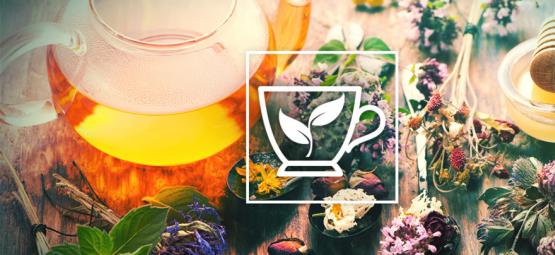
 5 min
30 April 2020
10 Best Herbs To Brew A Tea With
At least since the ancient Egyptians, herbs have been brewed into tea. Teas can be used as stimulants and sedatives or even as aphrodisiacs. Use vaping herbs to make teas that can be beneficial in sev ...
5 min
30 April 2020
10 Best Herbs To Brew A Tea With
At least since the ancient Egyptians, herbs have been brewed into tea. Teas can be used as stimulants and sedatives or even as aphrodisiacs. Use vaping herbs to make teas that can be beneficial in sev ...
-
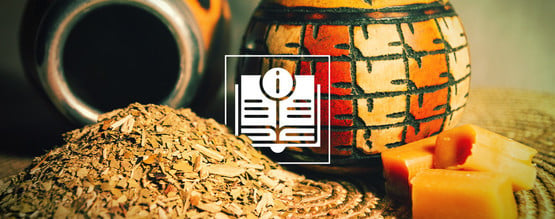
 3 min
15 September 2019
Yerba Maté: An Ancient Brew Loaded With Nutrients
Yerba mate is an ancient brew that has shown some impressive traits within the laboratory. Check out its long list of potential benefits, and how to make it yourself using traditional methods. ...
3 min
15 September 2019
Yerba Maté: An Ancient Brew Loaded With Nutrients
Yerba mate is an ancient brew that has shown some impressive traits within the laboratory. Check out its long list of potential benefits, and how to make it yourself using traditional methods. ...
-

 7 min
16 August 2019
Top 15 Natural Herbs For Energy & Vitality
Natural herbs are an excellent way to stay energised. With the demands of today's fast-paced society, it's easy to rely on coffee and energy drinks to get through the day. Unfortunately, these drinks ...
7 min
16 August 2019
Top 15 Natural Herbs For Energy & Vitality
Natural herbs are an excellent way to stay energised. With the demands of today's fast-paced society, it's easy to rely on coffee and energy drinks to get through the day. Unfortunately, these drinks ...
-
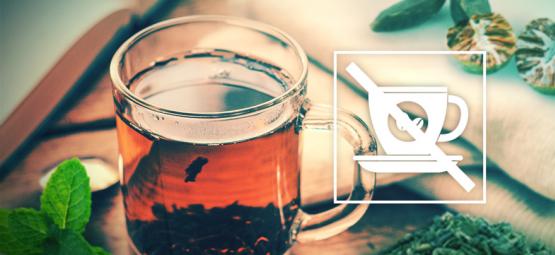
 5 min
25 July 2019
The Best Alternatives To Coffee: Natural Ways To Boost Energy
Although it may be hard to believe, not everybody is a fan of coffee. In case you happen to be one of those people, here is a list of perfect alternatives to the famous caffeinated beverage. Some of t ...
5 min
25 July 2019
The Best Alternatives To Coffee: Natural Ways To Boost Energy
Although it may be hard to believe, not everybody is a fan of coffee. In case you happen to be one of those people, here is a list of perfect alternatives to the famous caffeinated beverage. Some of t ...
-
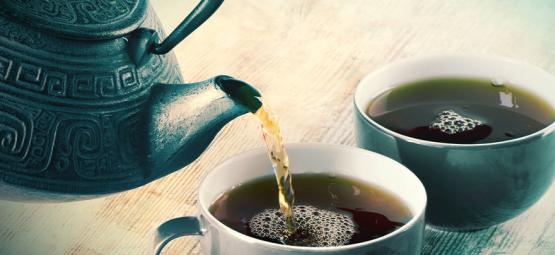
 2 min
10 August 2016
How To Make Kanna Tea
Kanna tea is an excellent way to enjoy the sedating effects of this versatile herb. So we have outlined everything you need to know about it, and how to make your own. ...
2 min
10 August 2016
How To Make Kanna Tea
Kanna tea is an excellent way to enjoy the sedating effects of this versatile herb. So we have outlined everything you need to know about it, and how to make your own. ...
Categories
-
Seedshop
- Feminized Cannabis Seeds
- Autoflowering Cannabis Seeds
- Regular Cannabis Seeds
- F1 Hybrids
- CBD Seeds
- Zamnesia Seeds
- Top 10 Autoflowering Seeds
- Top 10 Regular Seeds
- Top 10 USA Cannabis Strains
- Top 10 Zamnesia Seeds
- Top 10 Feminized Seeds
- Beginner Strains
- Below 1% THC
- Classic Cannabis Strains
- Cup Winners
- F1 Hybrids
- Fast-Flowering Strains
- High CBD Strains
- High THC Strains
- Mix Packs
- Zamnesia Exclusive Collabs
- Amnesia Seeds
- Blueberry Seeds
- Cheese Seeds
- Diesel Seeds
- Gorilla Seeds
- Haze Seeds
- Kush Seeds
- Purple Seeds
- Skunk Seeds
- White Widow Seeds
- Zamnesia Seeds
- ACE Seeds
- Advanced Seeds
- Amsterdam Genetics
- Anesia Seeds
- Auto Seeds
- Barney's Farm
- Big Buddha Seeds
- Bomb Seeds
- BSB Genetics
- BSF Seeds
- Buddha Seeds
- Bulldog Seeds
- Cali Connection
- Cannarado Genetics
- CannaBioGen
- CBD Crew
- CBD Seeds
- Compound Genetics
- The Dank Seeds
- Dark Horse Genetics
- Delicious Seeds
- Devil Harvest Original
- Dinafem
- DNA Genetics
- Doctor's Choice
- Dr. Underground
- Dutch Passion
- Elite Seeds
- Eva Seeds
- Exotic Seed
- Expert Seeds
- FastBuds
- Female Seeds
- Fenocan
- Flash Auto Seeds
- French Touch Seeds
- Garden of Green
- GeneSeeds
- Genehtik Seeds
- G13 Labs
- Grass-O-Matic
- Greenhouse Seeds
- Grow Your Own (DNA)
- Growers Choice
- Homegrown Fantaseeds
- House of the Great Gardener
- Humboldt Seed Company
- Humboldt Seed Organization
- Kalashnikov Seeds
- Kannabia
- The Kush Brothers
- Light Buds
- Little Chief Collabs
- Medical Seeds
- Ministry of Cannabis
- Mr. Nice
- Nirvana Seeds
- Original Sensible
- Paradise Seeds
- Perfect Tree
- Pheno Finder
- Philosopher Seeds
- Positronics Seeds
- Purple City Genetics
- Pyramid Seeds
- Rare Dankness
- Reggae Seeds
- Reserva Privada
- Resin Seeds
- Ripper Seeds
- Royal Queen Seeds
- Sagarmatha Seeds
- Samsara Seeds
- Seedstockers
- Sensation Seeds
- Sensi Seeds
- Serious Seeds
- Silent Seeds
- Soma Seeds
- Spliff Seeds
- Strain Hunters
- Sumo Seeds
- Super Sativa Seed Club
- Super Strains
- Sweet Seeds
- T.H. Seeds
- Top Tao Seeds
- Vision Seeds
- VIP Seeds
- White Label
- World Of Seeds
- Zativo Seeds
- Seed Banks
-
Headshop
-
Vaporshop
-
Healthshop
-
Smartshop
- Top 10 Smartshop
- Zamnesia Gift Cards
- After Party
- Aphrodisiacs
- Aromatherapy
- Blue Lotus
- CBD Vape Juice
- Capsule Machines
- Crystals, Gemstones & Minerals
- Dream Herbs
- Drug Tests
- Extracts
- Happy Caps
- Herbal Tea
- Herbs & Seeds
- Incense
- Kanna
- Kratom
- LSA Seeds
- Mescaline Cacti
- Microdosing
- Nootropics
- Relaxing
- Salvia divinorum
- Smart Seeds
- Stimulants
- Supplements
- Tinctures
- Vape Herbs
-
Shroomshop
-
Growshop
- Top 10 Growshop
- Top 10 Plant Seeds
- All Seeds
- Cacti
- Chili & Pepper Seeds
- Companion Plants
- Edible Plant Seeds
- Exotic Seeds
- Flower Seeds
- Fruit Seeds
- Herb Seeds
- Interior Plant Seeds
- Microgreens
- Psychoactive Plant Seeds
- Sprouting
- Vegetable Seeds
- Wellness Plant Seeds
- After Harvest
- Climate Control
- Fertilizer
- Grow Tents
- Harvest, Dry & Cure
- LED Grow Lights
- Plant Seeds
- Propagation
-
Merchandise
-
Sale section
Account
Information
Our Offers
Our website won't work without these cookies activated. Therefore functional cookies can't be disabled.



















